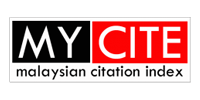A novel conductive polymeric hollow fiber membrane as anode for enhanced electrocatalytic dye degradation and separation
DOI:
https://doi.org/10.58915/ijneam.v18i4.2671Keywords:
Electrocatalytic, Polymeric hollow fiber membrane, Dye Separation, Conductive MembraneAbstract
Methylene blue, a widely used synthetic dye, poses significant environmental and health risks due to its non-biodegradable nature, toxicity, and persistence in aquatic systems. Addressing its removal has become a priority, with electrocatalytic systems gaining attention for their high efficiency in degrading such pollutants. These systems utilize reactive oxygen species generated at the electrodes to break down dyes. In this study, for the first time, conductive polymeric hollow fiber membranes were developed as anodes in electrocatalytic systems to enhance methylene blue degradation. The membranes were prepared using a phase inversion technique, incorporating polysulfone (PSf) and varying polyaniline (PANI) contents (0 wt.%, 1 wt.%, 3 wt.%, and 5 wt.%). Results demonstrated that increased PANI content significantly improved conductivity, with the highest conductivity of 0.0006 S/cm observed for 5 wt.% PANI, correlating with a maximum methylene blue degradation efficiency of nearly 70%. This study contributes by introducing an innovative membrane design, combining conductivity and electrocatalytic performance for sustainable wastewater treatment.
Downloads
Published
How to Cite
Issue
Section
License
Copyright (c) 2025 International Journal of Nanoelectronics and Materials (IJNeaM)

This work is licensed under a Creative Commons Attribution-NonCommercial-ShareAlike 4.0 International License.

















